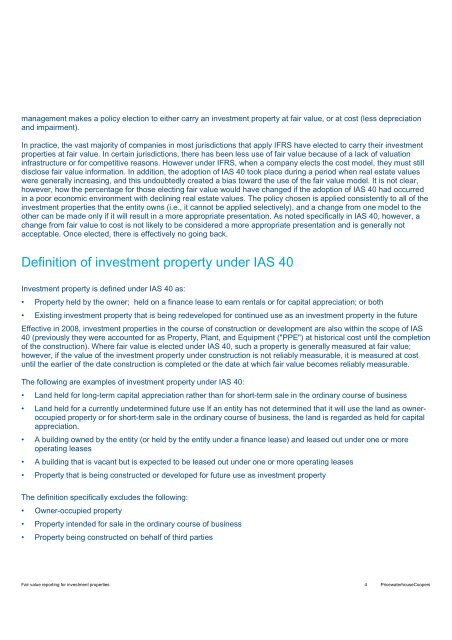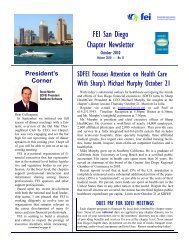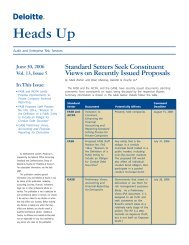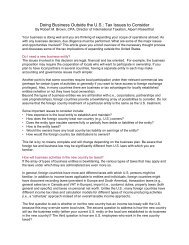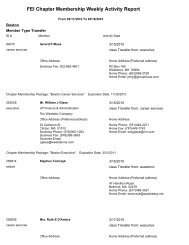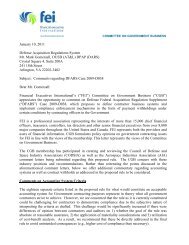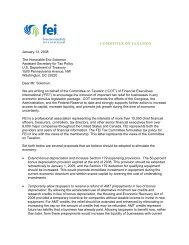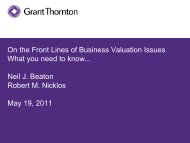Fair value reporting for investment properties under US GAAP
Fair value reporting for investment properties under US GAAP
Fair value reporting for investment properties under US GAAP
Create successful ePaper yourself
Turn your PDF publications into a flip-book with our unique Google optimized e-Paper software.
management makes a policy election to either carry an <strong>investment</strong> property at fair <strong>value</strong>, or at cost (less depreciation<br />
and impairment).<br />
In practice, the vast majority of companies in most jurisdictions that apply IFRS have elected to carry their <strong>investment</strong><br />
<strong>properties</strong> at fair <strong>value</strong>. In certain jurisdictions, there has been less use of fair <strong>value</strong> because of a lack of valuation<br />
infrastructure or <strong>for</strong> competitive reasons. However <strong>under</strong> IFRS, when a company elects the cost model, they must still<br />
disclose fair <strong>value</strong> in<strong>for</strong>mation. In addition, the adoption of IAS 40 took place during a period when real estate <strong>value</strong>s<br />
were generally increasing, and this undoubtedly created a bias toward the use of the fair <strong>value</strong> model. It is not clear,<br />
however, how the percentage <strong>for</strong> those electing fair <strong>value</strong> would have changed if the adoption of IAS 40 had occurred<br />
in a poor economic environment with declining real estate <strong>value</strong>s. The policy chosen is applied consistently to all of the<br />
<strong>investment</strong> <strong>properties</strong> that the entity owns (i.e., it cannot be applied selectively), and a change from one model to the<br />
other can be made only if it will result in a more appropriate presentation. As noted specifically in IAS 40, however, a<br />
change from fair <strong>value</strong> to cost is not likely to be considered a more appropriate presentation and is generally not<br />
acceptable. Once elected, there is effectively no going back.<br />
Definition of <strong>investment</strong> property <strong>under</strong> IAS 40<br />
Investment property is defined <strong>under</strong> IAS 40 as:<br />
• Property held by the owner; held on a finance lease to earn rentals or <strong>for</strong> capital appreciation; or both<br />
• Existing <strong>investment</strong> property that is being redeveloped <strong>for</strong> continued use as an <strong>investment</strong> property in the future<br />
Effective in 2008, <strong>investment</strong> <strong>properties</strong> in the course of construction or development are also within the scope of IAS<br />
40 (previously they were accounted <strong>for</strong> as Property, Plant, and Equipment ("PPE") at historical cost until the completion<br />
of the construction). Where fair <strong>value</strong> is elected <strong>under</strong> IAS 40, such a property is generally measured at fair <strong>value</strong>;<br />
however, if the <strong>value</strong> of the <strong>investment</strong> property <strong>under</strong> construction is not reliably measurable, it is measured at cost<br />
until the earlier of the date construction is completed or the date at which fair <strong>value</strong> becomes reliably measurable.<br />
The following are examples of <strong>investment</strong> property <strong>under</strong> IAS 40:<br />
• Land held <strong>for</strong> long-term capital appreciation rather than <strong>for</strong> short-term sale in the ordinary course of business<br />
• Land held <strong>for</strong> a currently undetermined future use If an entity has not determined that it will use the land as owneroccupied<br />
property or <strong>for</strong> short-term sale in the ordinary course of business, the land is regarded as held <strong>for</strong> capital<br />
appreciation.<br />
• A building owned by the entity (or held by the entity <strong>under</strong> a finance lease) and leased out <strong>under</strong> one or more<br />
operating leases<br />
• A building that is vacant but is expected to be leased out <strong>under</strong> one or more operating leases<br />
• Property that is being constructed or developed <strong>for</strong> future use as <strong>investment</strong> property<br />
The definition specifically excludes the following:<br />
• Owner-occupied property<br />
• Property intended <strong>for</strong> sale in the ordinary course of business<br />
• Property being constructed on behalf of third parties<br />
<strong>Fair</strong> <strong>value</strong> <strong>reporting</strong> <strong>for</strong> <strong>investment</strong> <strong>properties</strong> 4 PricewaterhouseCoopers


